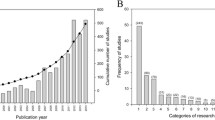Summary
Demographic variation was examined in 3 populations of the Australian desert shrub Cassia nemophila which vary in their grazing histories. Age-specific life tables were constructed from 50 years of observations on mortality and recruitment at the Koonamore Vegetation Reserve in South Australia. Population projection matrix models were used to examine population responses to grazing pressure. The predicted population growth rates, reproductive values and stable age distributions are evaluated and compared with observed results. Grazing by sheep or rabbits, in high populations, prevents shrub recruitment and causes local population extinction. However, where protected from sheep and with low rabbit pressure, Cassia populations have increased. Current sheep grazing practices and rabbit population levels if continued will have a drastic affect on Cassia populations and other shrub species, and on the structure and composition of the Australian arid shrublands in general.
Similar content being viewed by others
References
Barbour MG (1969) Age and space distribution of the desert shrub Larrea divaricata. Ecology 50:679–685
Batianoff NG, Burrows WH (1973) Studies in the dynamic control of woody weeds in semiarid Queensland. 2. Cassia nemophila and C. artemisioides. Queensld J Agric Anim Sci 30:65–71
Bierzychudek P (1982) The demography of jack-in-the-pulpit, a forest perennial that changes sex. Ecol Monogr 52:335–351
Burrows WH (1974) Trees and shrubs in mulga lands. Queensld Agric J 100:322–329
Carrodus BB, Specht RL, Jackman ME (1965) The vegetation of Koonamore Station, South Australia. Trans Roy Soc S Aust 89:41–57
Caswell H (1978) A general formula for the sensitivity of population growth rate to changes in life history parameters. Theor Pop Biol 14:215–230
Caswell H, Werner PA (1978) Transient behavior and life history analysis of teasel (Dipsacus sylvestris Huds.). Ecology 59:53–66
Cohen JE (1979) Comparative statics and stochastic dynamics of age-structured populations. Theor Pop Biol 16:159–171
Crisp MD (1978) Demography and survival under grazing of three Australian semi-desert shrubs. Oikos 30:520–528
Crisp MD, Lange RT (1976) Age structure, distribution and survival under grazing of the arid-zone Acacia burkittii. Oikos 27:86–92
Cunningham GM (1971) Recognizing western fodder trees. J Soil Conserv Serv NSW 19:49–58
Ellison L (1960) Influence of grazing on plant succession of range-lands. Bot Rev 26:1–78
Enright N, Ogden J (1979) Applications of transition matrix models in forest dynamics: Araucaria in Papua New Guinea and Nothofagus in New Zealand. Aust J Ecol 4:3–23
Hall EAA, Specht RL, Eardley CM (1964) Regeneration of the vegetation on Koonamore Vegetation Reserve 1926–1962. Aust J Bot 12:205–264
Harper JL (1977) Population Biology of Plants. Academic Press, New York
Harper JL, White J (1974) The demography of plants. Ann Rev Ecol Syst 5:419–463
Hartshorn G (1975) A matrix model of tree population dynamics. In: Golley FG, Medina E (eds) Tropical Ecological Systems. Springer-Verlag, New York, pp 41–51
Keyfitz N (1977) Introduction to the Mathematics of Populations. Addison-Wesley, Reading, Massachusetts
Lange RT, Purdie R (1976) Western myall (Acacia sowdenii), its survival prospects and management needs. Aust Rangel J 1:64–69
Law R (1979) Ecological determinants in the evolution of life histories. In Anderson RM, Turner BD, Taylor LR (eds) Population Dynamics. 20th Symp British Ecological Society. Blackwell, Oxford, pp 81–103
Leigh JH, Mulham WE (1971) The effects of defoliation on the persistence of Atriplex vesicaria. Aust J Agric Res 22:239–244
Moore PD (1976) Influence of grazing. Nature 262:6–7
Noble IR (1977) Long-term biomass dynamics in an arid chenopod shrub community at Koonamore, South Australia. Aust J Bot 25:639–653
Noble IR, Crisp MD (1980) Germination and growth models of shortlived grass and forb populations based on long-term photo-point data at Koonamore, South Australia. Israel J Bot 28:195–210
Osborn TGB, Wood JG, Paltridge TB (1935) On the climate and vegetation of Koonamore Vegetation Reserve to 1931. Proc Linn Soc NSW 60:392–427
Perry RA (1970) Arid shrublands and grasslands. In: Moore RM (ed) Australian Grasslands. Aust Natl Univ Press, Canberra, p 246–259
Preece PB (1971a) Contributions to the biology of mulga. 1. Flowering. Aust J Bot 19:21–38
Preece PB (1971b) Contributions to the biology of mulga. 2. Germination. Aust J Bot 19:39–49
Randell BR (1970) Adaptations in the genetic system of Australian arid zone Cassia. Aust J Bot 18:77–97
Roughton RD (1972) Shrub age structures on a mule deer winter range in Colorado. Ecology 53:615–625
Silander JA (1978) Density-dependent control of reproductive success in Cassia biflora. Biotropica 10:292–296
Stearns SC (1977) The evolution of life history traits: a critique of the theory and a review of the data. Ann Rev Ecol Syst 8:145–171
Symon DE (1966) A revision of the genus Cassia L. Caesalpiniaceae in Australia. Trans Roy Soc S Aust 90:73–151
Werner PA, Caswell H (1977) Population growth rates and age versus stage-distribution models for teasel (Dipsacus sylvestris Huds.). Ecology 58:1103–1111
Williams OB (1968) That uneasy state between animal and plant in the manipulated situation. Proc Ecol Soc Aust 2:167–174
Williams OB (1977) Reproductive wastage in rangeland plants with particular reference to the role of herbivores. Reprinted by Australian Rangeland Society, Perth pp 227–248
Wilson AD, Mulham WE, Leigh JH (1976) A note on the effects of browsing by feral goats on a belah (Casarina cristata) —rosewood (Heterodendrum oleifolium) woodland. Aust Rangel J 1:7–12
Author information
Authors and Affiliations
Rights and permissions
About this article
Cite this article
Silander, J.A. Demographic variation in the Australian desert cassia under grazing pressure. Oecologia 60, 227–233 (1983). https://doi.org/10.1007/BF00379524
Received:
Issue Date:
DOI: https://doi.org/10.1007/BF00379524




